Hon. Dianne T. Renwick, Presiding Justice
Susanna Molina Rojas, Clerk of the Court
1950 - 1969
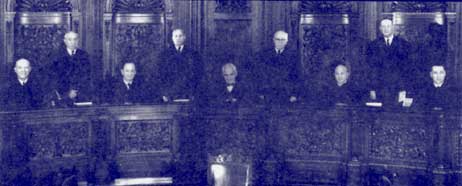
Associate Justices James B.M. McNally, Charles D. Breitel,
Presiding Justice Bernard Botein, Associate Justices Benjamin R. Rabin,
Francis E. Valente. Standing left to right: Associate Justices Aron Steuer,
Harold A. Stevens, Francis Bergan, Samuel W. Eager

Seated left to right: Associate Justices Aron Steuer, H


Presiding Justice
1957-1972

Associate Justice
1957-1972

Presiding Justice
1947-1957
By 1954, it was clear that the Court’s growing staff and caseload had created space problems at 27 Madison Avenue.
In that year, a six-story addition to the courthouse was begun at 31 Madison Avenue. Twelve years later the original courthouse was declared a landmark; in 1981, the courtroom itself was so designated.
In the post-war decades, New York grew in recognition as an international center of culture. The American musical theater was at its height: shows like the Music Man and The Sound of Music were Broadway hits, along with more serious fare such as Raisin in the Sun and A Streetcar Named Desire. The Actor’s Studio and other schools brought new acting talents to the city, such as Marlon Brando, James Dean and Marilyn Monroe. From time to time a theater company or its star would find itself resorting to the Court, as did the producers of My Fair Lady when its theater threatened to evict the play. New York was a center for both popular and classical music, the latter celebrated with the 1964 opening of the Lincoln Center Complex, itself a subject of litigation before the Court.
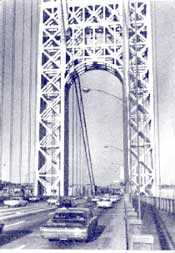
In the 1950s the City also flourished as a center for the television industry.
The new phenomenon of “quiz shows” figured in court cases, when one attorney, a contestant on “Twenty-One,” was suspended from practice for perjuring herself in an investigation into the rigging of these shows.
The Court over the years dealt with the effect of change on the traditional, married, two-parent family. In 1944, the Court modified the rule of nonliability of a putative father to support his child. Two years later, it ruled for the first time that an illegitimate child could receive death benefits of its putative father under the New York Employees’ Retirement System.
On the international front, the Cold War decades after World War II led to major decisions by the Appellate Division.
In 1950, an American-based group within the Russian Orthodox Church invoked a schism, seeking control of the Russian Orthodox St.Nicholas Cathedral and effective control over governance of the church itself. Plaintiffs argued that, under the thumb of the disapproving Soviet Government, the Russian church authorities had lost all independence. The Appellate Division ruled that the dispute had to be dealt with according to church, not secular, law.
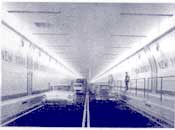
At home, the Cold War manifested itself in the drive to identify and punish domestic communists. In the course of this “Red Scare,” innocent people were sometimes “blacklisted” and refused employment. One of these, John Henry Faulk, a well-known radio and TV performer before his blacklisting, sued an anti-communist organization called “AWARE”, charging he had lost employment and income as a result of its allegations. Faulk won a large libel judgment in one of the most publicized cases of 1963.
Among the changes emerging from the post-war period was an energized civil rights movement for racial equality. In one leading 1964 case, the Court held it proper that a school district be designed deliberately to incorporate minority students. Though New York had not had de jure segregation during this time, the civil rights movement greatly expanded access to opportunities for the City’s racial and other minorities.
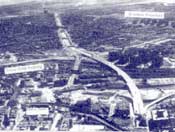
A decade earlier, in a case involving religious discrimination, the Appellate Division had affirmed that a New York employment agency’s questions to an applicant about her religion and changes in family name were discriminatory. The Court also took on religious discrimination in a 1960 case, which held that a Saudi Arabian oil company hiring American workers could not carry out an anti-semitic hiring policy in New York.
Sexual discrimination became a legal issue, too. In 1957, the Court held against the practice of keeping sex-based eligibility lists for school principals and junior principals of elementary schools, and four years later it declared illegal the New York Police Department’s refusal to allow women to take the sergeant’s examination.
In 1963, the Appellate Division heard and decided the case of Hill v. Joseph Hayes and Time, Inc.
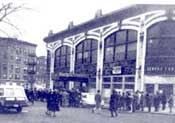
This case concerned a magazine article about a fictionalized play based on a 1952 incident in which a Pennsylvania family was held hostage by escaped convicts. The article dwelt on the original incident and mentioned the Hill family by name. The Court’s decision holding that the article constituted an invasion of privacy was affirmed by the New York Court of Appeals but later reversed by the U.S. Supreme Court, which thereby significantly expanded the existing parameters of constitutionally protected speech.
New York’s harbor had made it a major shipping center since the days of Peter Stuyvesant, and the Court’s caseload reflected the continuing importance of New York harbor. In the modern era, cases dealing with all aspects of the shipping industry - from shipbuilding contracts to questions of sea-worthiness to longshoremen’s collective bargaining issues – have come to the Court’s attention. The Appellate Division has been called on to pass upon regulations issued by the Waterfront Commission.
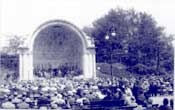
Another case, an invasion of privacy action, concerned the publication of a popular book, Waterfront Priest.
During the 1950's and 1960's the Court dealt with matters concerning the new Bronx River Expressway, and Lincoln Tunnel, the George Washington Bridge, and a new Port Authority. In one memorable case, the Court ordered the builder of a residential high-rise, who had overbuilt the structure in violation of the zoning law, to remove several stories of the building.
As New York’s superstructure continued to grow New Yorkers would give new thought to the preservation of their past.